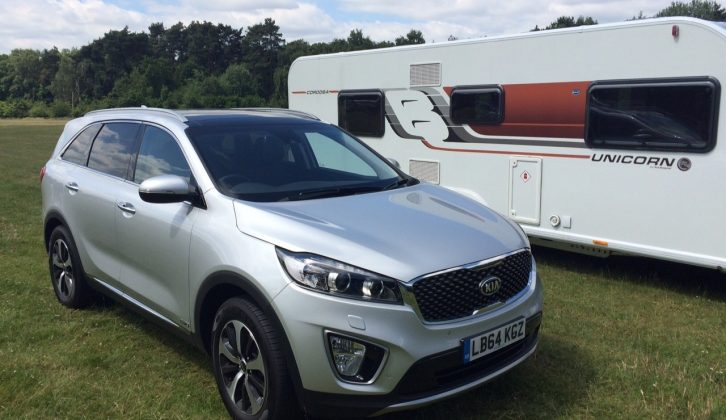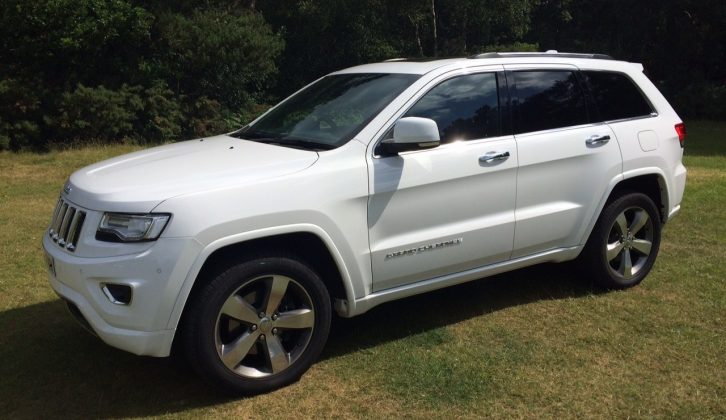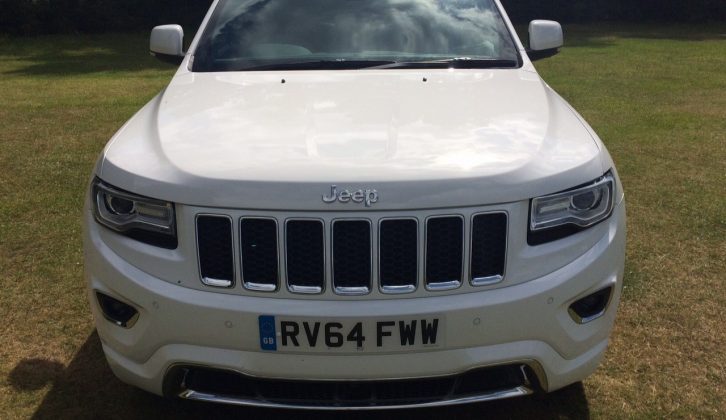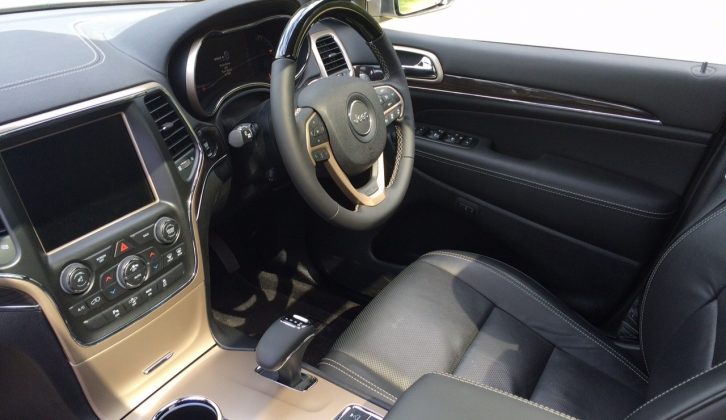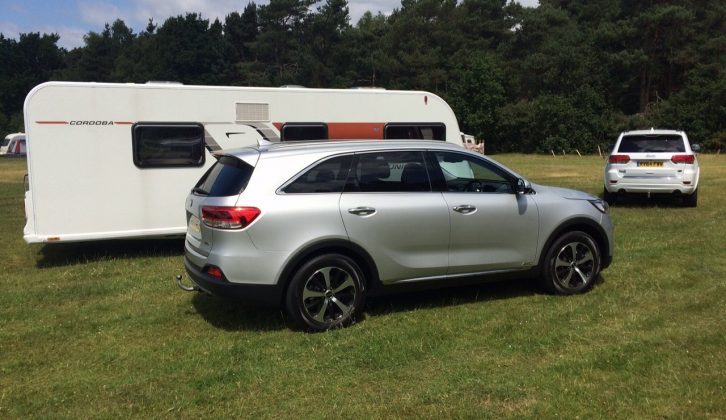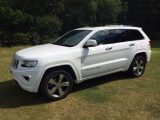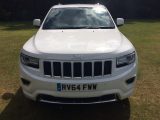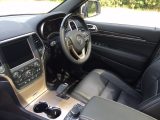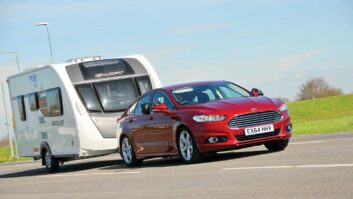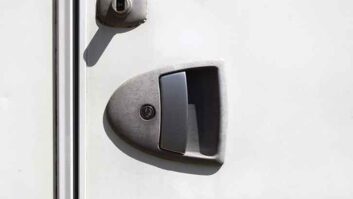The sons of famous fathers have a lot to live up to. I was struck by this when towing with two heavyweight 4x4s earlier this week.
Today’s Jeep Grand Cherokee and Kia Sorento both trace their heritage back to cars which cast long shadows. In the Sorento‘s case, it’s the first-generation model which started production back in 2003. I remember a Kia exec once telling me that something like 80% of all new Sorentos drove away from the dealer with towing gear already fitted, such was the car’s popularity with tow car drivers and caravanners in particular.
In the case of the Grand Cherokee, it’s not so much one model that it has to live up to, but a whole back catalogue of tough and rugged 4x4s. It all started with the original Willys Jeep back in 1941, a 74-year history that means Jeep has been building off-roaders some seven years longer than Land Rover.
As well as having big boots to fill, both cars follow more recent disappointments. The second-generation Sorento was a decent enough car, but it wasn’t as cheap as the original. Instead, Kia pushed the Sorento upmarket, and said goodbye to many of the car’s caravanning fans in the process.
Today’s Grand Cherokee is a thoroughly facelifted version of the car launched in 2010, which replaced the crude and cramped previous generation. A few months after first driving the car in 2005, Autocar magazine’s road testers described it as the worst car they had driven all year.
Today’s Grand Cherokee and Sorento are signs of a genuine return to form. After years in the doldrums with an outdated model line up and a disaffected dealer network, Jeep is on the up again. Sales jumped by 75% in 2014 compared with 2013. This year looks set to be even better, with a staggering growth rate of nearly 250% over last year.
Jeep’s new smaller and more economical models are playing a strong part in that, but the Grand Cherokee is finding plenty of new fans, too.
After a week with the car, I can see why. From the outside, the car is instantly recognisable as a Jeep – tough, imposing and brimful of character. On the inside, it’s a world away from the Jeeps of 10 years ago, with a smart, modern interior and a decent standard of finish. It’s not a match for the best from Mercedes-Benz or Volvo but it’s not a million miles away.
The car I’ve been driving is Overland spec, Jeep-speak for being loaded with every item of equipment you can think of and quite a few you probably can’t. Your £48,195 buys 20-inch alloy wheels, variable-height air-suspension, xenon headlights, a reversing camera, automatic headlights and rain-sensing wipers, a panoramic sunroof, climate control, Jeep’s ‘Uconnect’ infotainment and connectivity system (think sat-nav with bells on), Nappa leather upholstery, and heated seats front and rear.
As well as lots of toys, the Grand Cherokee has plenty of muscle. Whereas some new rivals like the Volvo XC90 come with a four-cylinder diesel engine, the Grand Cherokee has a V6, and it sounds all the better for it. There’s a deep bass rumble which reminds you just how much pulling power you have under your big toe. With 420lb ft of torque, towing a big twin-axle caravan up to speed is easy for the Jeep. It feels stable once up to motorway speeds, too.
The sheer weight of the thing certainly helps. The Grand Cherokee has a kerbweight of 2328kg, putting it firmly in the full-fat 4×4 category. But while it helps with matching ratios when towing, that kind of heft does fuel economy no favours. The official combined figure is 37.7mpg, while the new Volvo XC90 diesel returns 49.6mpg.
Next to the Jeep, the Kia Sorento is a puny lightweight, weighing just 1932kg. But that contributes to the Sorento returning a more affordable 46.1mpg on the combined cycle.
They may both be big 4x4s, but in truth they are very different machines and will appeal to different buyers (although tested at the same time, they’ll be reviewed separately in the magazine). The Kia is more than £10,000 cheaper for one thing, although the £35,845 price tag of our KX-3 manual test car will raise eyebrows among fans of the cut-price original.
Today’s car is a much more sophisticated and practical machine. It has seven seats instead of five in a roomy and practical cabin. Like Jeep, Kia has made great strides with interior quality, and has packed its new flagship with high-tech safety systems and touchscreen gadgetry. The list of standard kit puts any similarly priced car with a prestige badge to shame.
The Sorento is one of the most practical 4x4s you can buy, so long as you don’t plan on using all seven seats too often. With the third row neatly folded into the floor, there’s 605 litres for bags. That’s more luggage space than in some big estate cars.
The 2.2-litre engine sounds nothing like as good as the Jeep’s 3.0-litre V6, but with 325lb ft of torque it’s plenty strong enough for pulling a twin-axle tourer. And the new car does a much better job than the old in balancing comfort and control when towing at motorway speeds.
I enjoyed driving both of these cars, with and without a caravan in tow. The Jeep lives up to its heritage. It may not be the roomiest 4×4 and it’s certainly not the most fuel-efficient, but there’s something about the burble from the exhaust and the effortless performance that’s hard not to admire.
The Kia doesn’t live up to its past, it leaves it behind. The first-generation Sorento may have been a bargain, but it was also fairly crude. The new Sorento is a much more polished performer. Its higher price means I doubt it will ever be as popular with caravanners as the original, but it’s a much better car.
Look out for our forthcoming comprehensive tests, to find out what tow car ability both these cars have.
Today's Grand Cherokee and Sorento are signs of a genuine return to form
